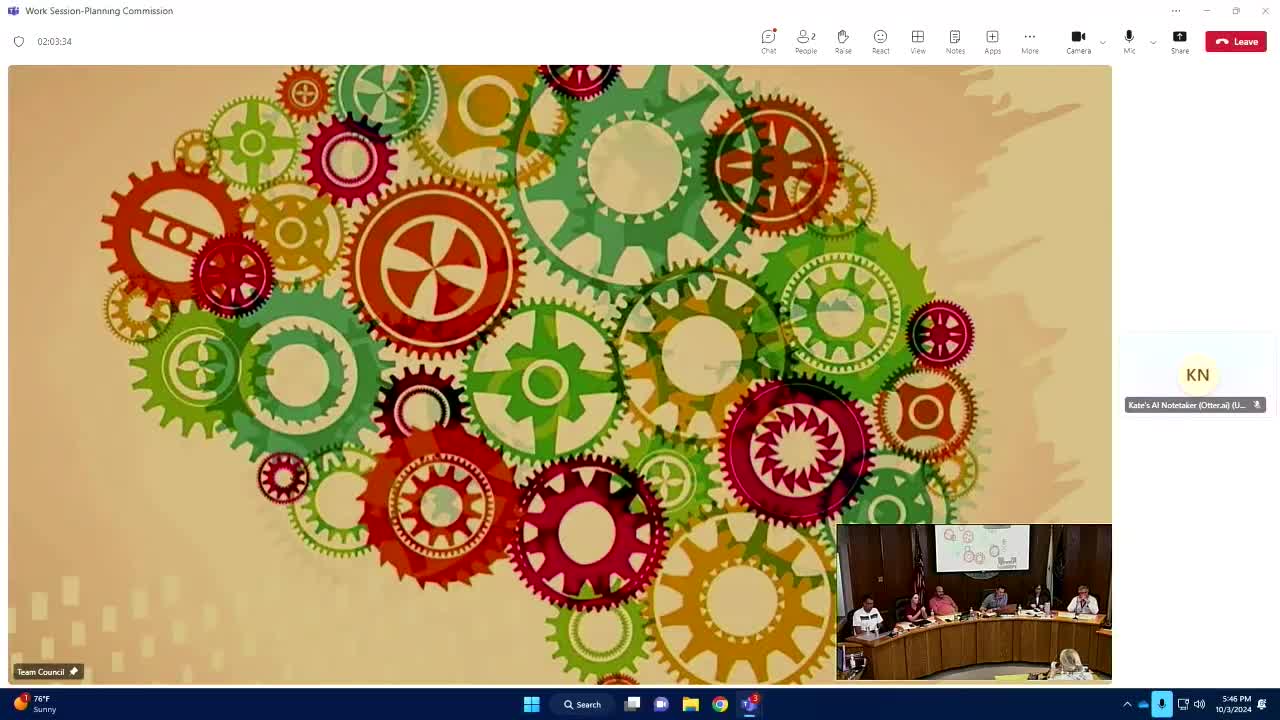Housing Crisis Deepens as Affordability Challenges Mount
October 03, 2024 | Lehi City Planning Commission, Lehi, Utah County, Utah
This article was created by AI summarizing key points discussed. AI makes mistakes, so for full details and context, please refer to the video of the full meeting. Please report any errors so we can fix them. Report an error »

During a recent government meeting, officials discussed the growing challenges of housing affordability and traffic congestion in Lehigh. The conversation highlighted the interconnectedness of these issues, emphasizing that as more people drive into the city for work, traffic on major roads like I-15 is expected to increase. This surge in traffic is compounded by ongoing construction and development in the area, raising concerns about the strain on local infrastructure.
A key point raised was the impact of housing availability on local revenue. Officials noted that if residents cannot afford to live in Lehigh, the city misses out on property tax revenue that is crucial for maintaining and improving roadways. This situation is particularly concerning for essential workers, such as teachers and first responders, who may seek employment elsewhere if they cannot find affordable housing in the community.
The meeting also addressed the changing landscape of homeownership. Traditionally, owning a single-family home was seen as an attainable goal for many Americans. However, rising property prices and the prevalence of corporate landlords purchasing single-family homes for rental purposes have shifted this reality. Officials acknowledged that while some may accept this trend, it raises significant concerns about long-term community stability and the ability of residents to invest in their neighborhoods.
To tackle these challenges, the discussion included proposals for a \"critical homeownership overlay zone,\" which would involve reducing lot sizes to create more affordable housing options. This initiative aims to lower sales prices by at least 20%, although recent data indicated that current market reductions based on lot size were minimal—around 2.21%. This discrepancy raises questions about the effectiveness of such measures and whether they would genuinely lead to more affordable housing.
As the meeting concluded, officials encouraged further dialogue on potential regulatory changes at both the city and state levels to better support local residents and address the pressing issues of housing and traffic. The discussions underscored the complexity of these interconnected challenges and the need for comprehensive solutions to foster a sustainable community.
A key point raised was the impact of housing availability on local revenue. Officials noted that if residents cannot afford to live in Lehigh, the city misses out on property tax revenue that is crucial for maintaining and improving roadways. This situation is particularly concerning for essential workers, such as teachers and first responders, who may seek employment elsewhere if they cannot find affordable housing in the community.
The meeting also addressed the changing landscape of homeownership. Traditionally, owning a single-family home was seen as an attainable goal for many Americans. However, rising property prices and the prevalence of corporate landlords purchasing single-family homes for rental purposes have shifted this reality. Officials acknowledged that while some may accept this trend, it raises significant concerns about long-term community stability and the ability of residents to invest in their neighborhoods.
To tackle these challenges, the discussion included proposals for a \"critical homeownership overlay zone,\" which would involve reducing lot sizes to create more affordable housing options. This initiative aims to lower sales prices by at least 20%, although recent data indicated that current market reductions based on lot size were minimal—around 2.21%. This discrepancy raises questions about the effectiveness of such measures and whether they would genuinely lead to more affordable housing.
As the meeting concluded, officials encouraged further dialogue on potential regulatory changes at both the city and state levels to better support local residents and address the pressing issues of housing and traffic. The discussions underscored the complexity of these interconnected challenges and the need for comprehensive solutions to foster a sustainable community.
View full meeting
This article is based on a recent meeting—watch the full video and explore the complete transcript for deeper insights into the discussion.
View full meeting

